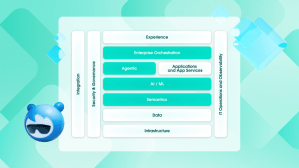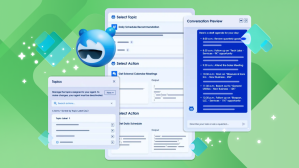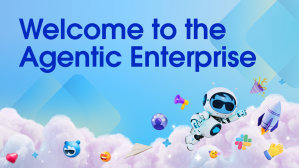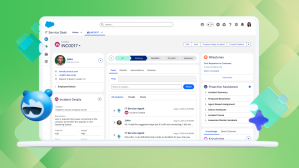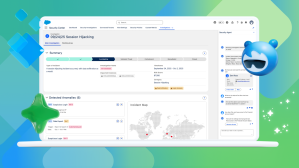The bedrock of traditional IT architecture is cracking under the pressures of AI implementation.
Built for predictable, human-driven tasks, legacy architecture is fundamentally unprepared for the dynamic, nondeterministic nature of AI agents. Today’s architecture is organized into seven rigid layers (infrastructure, data, integration, applications, and experience, cross-cut by security and IT operations). This is creating problems for AI that include:
- Siloed intelligence: Custom AI models are often “bolted onto” specific applications, creating isolated solutions that prevent them from being shared or easily upgraded and governed consistently.
- Lack of semantic cohesion: Without a common semantic layer, agents cannot reason over disparate datasets and are limited to narrow, single-purpose tasks.
- Governance in a nondeterministic world: The dynamic nature of agents requires a new way to orchestrate and govern complex workflows that span agents, humans, and deterministic systems.
To close these gaps, enterprises must evolve their core architecture. This requires moving beyond the familiar seven-layer model to a new architecture that will enable AI agents to sense, reason, and act with increasing autonomy.
The four new architectural layers for the Agentic Enterprise
To complement the existing seven layers of today’s IT infrastructure, companies must add four new layers, each designed to address the specific challenges of deploying and scaling agentic AI.
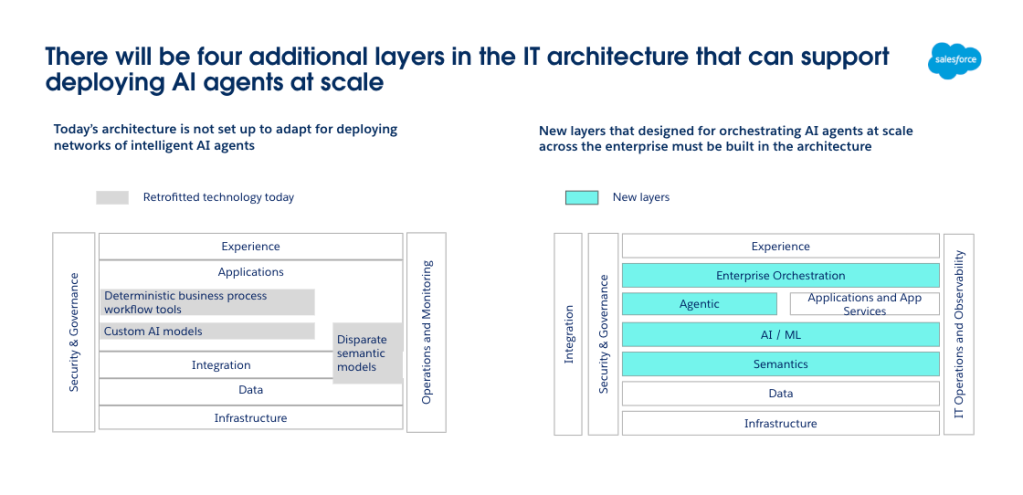
- The Semantic Layer: The agent’s knowledge layer. This layer provides the unified understanding of data and knowledge across the enterprise, enabling both humans and AI agents to interpret and act on information consistently. For AI agents, this layer is critical to allow agents to understand the meaning of user queries or to understand the business context of enterprise content written for human users so the agent can reason effectively, make inferences not explicitly coded in data, and translate user requests into the right data queries.
- The AI/ML Layer: The enterprise’s centralized intelligence hub. This layer provides a platform for managing both internally and externally developed models, handling everything from training to real-time monitoring. This approach ensures consistency and security while allowing architects to dynamically swap models based on business context — for example, using a smaller, more specialized model for a specific task to optimize for cost or latency. Agentic AI platforms leverage the capabilities of this layer to power its agents’ reasoning, providing a consistent and secure way for agents to access the intelligence they need for their tasks.
- The Agentic Layer: The operational heart of the agentic workforce. It provides the frameworks, runtimes, and protocols needed to build, manage, and execute AI agents at scale. It handles an agent’s “cognitive architecture,” including its reasoning engine, memory, and ability to use tools. It also manages the agent lifecycle, from development and testing to deployment and decommissioning, ensuring that agents are always running in the latest, most optimized state.
- The Enterprise Orchestration Layer: The critical control plane. It coordinates, governs, and optimizes complex enterprise workflows spanning AI agents, humans, automation tools, and deterministic systems. It represents business processes in semantically rich models that define both deterministic and dynamic/agentic steps. By embedding enterprise-wide rules, compliance checks, and policy enforcement directly into complex workflows and injecting human oversight at critical decision points, this layer ensures alignment with business objectives; maintains transparency and governance across all activities; and enables continuous optimization of processes to achieve enterprise-wide efficiency, compliance, and adaptability.
With better semantics, AI-powered capabilities, agent development, and governance, enterprises can deploy more sophisticated and trusted AI agents.
A phased approach to transformation
As with any technological change, architectural transformation from a seven-layer to an 11-layer approach to support an Agentic Enterprise requires a multistage journey. This journey takes into consideration the evolving roles of agents, and IT investments, likewise, should evolve in lockstep with the maturity of agentic deployments.
While the precise roadmap will vary, most organizations can adopt a phased approach that concurrently establishes the necessary architectural foundations and delivers tangible business value at each step.
- Phase 1: Information Retrieval Agents: The focus is on building a trustworthy data foundation and the basic AI components needed for information retrieval through the agentic, AI/ML, and semantic layers. A company can deploy simple agents to answer questions, such as a wealth management firm deploying an agent to summarize client information to prepare a portfolio advisor for a client call.
- Phase 2: Domain-Specific Agent Workflows: Once trust is established, the architecture shifts from “read-only” to “action-oriented.” A wealth management firm could deploy an agent to autonomously monitor client portfolios and flag market events. This requires investments in the agentic layer and the application layer to modularize business logic into services and tools.
- Phase 3: Cross-Domain Orchestration: The goal here is to automate complex, end-to-end processes that span organizational silos. For example, the wealth management firm can enable an agent to proactively suggest trades for a human advisor to review, connecting the investment portfolio capabilities with the product and risk management capabilities to ensure compliance and optimal returns. Because this phase requires an architecture that supports business processes across different organizational and functional boundaries, not confined to a single one, it requires significant investment in a shared semantic understanding across the enterprise and a centralized orchestration engine for governance.
- Phase 4: Multi-Agent, Multi-Domain Orchestration: The final stage focuses on creating a holistic digital simulation (digital twin) of the enterprise for continuous improvement and strategic planning. The architecture must support autonomous collaboration between agents. For the wealth management firm, this would involve a network of agents collaborating to proactively set up a client call, stress-test proposed trades, and verify them against compliance rules. This requires a fully dynamic and self-healing infrastructure, along with advanced agent-to-agent (A2A) communication protocols and an agent self-reflection and adaptation framework, which provides a way for an AI agent to continuously improve its own performance.
Building the Agentic Enterprise
This architectural transformation isn’t just a technical upgrade; it’s a strategic journey that helps enterprises truly harness the power of autonomous agents. In fact, we’re already seeing customers start to embark on this transformation journey with Agentforce, from Hero FinCorp enabling loan approval in just 30 minutes to Good360 connecting disaster-affected communities with essential supplies up to three times faster.
This architectural transformation isn’t just a technical upgrade; it’s a strategic journey that helps enterprises truly harness the power of autonomous agents.
Emin Gerba, Chief Architect, Salesforce
To achieve these kinds of tangible results, IT leaders and architects need a clear path forward. Resources like the Salesforce Architecture Center help them navigate the new agentic AI complexities. The site provides a comprehensive blueprint of principles and best practices, including security, reliability, and scalability, needed to build trusted, scalable solutions.
By leveraging the right framework and the right tools — from Data Cloud as the foundational enterprise data platform and MuleSoft Agent Fabric as the orchestration layer to Agentforce as a platform for building and deploying AI agents, for example — every company can become a secure, intelligent, and agile Agentic Enterprise.
More information:
- Dive deeper into the architectural blueprint for the Agentic Enterprise
- Learn about the Agentic Maturity Model
- Read about the new MuleSoft Agent Fabric
- Explore why Salesforce and an alliance of industry leaders are co-leading the Open Semantic Interchange (OSI)
- Dive into the cloud infrastructure for the Agentic Enterprise
- Read why metadata is key to building a massive AI agent ecosystem
- Learn why CIOs need to incorporate zero copy into their AI and data strategies
